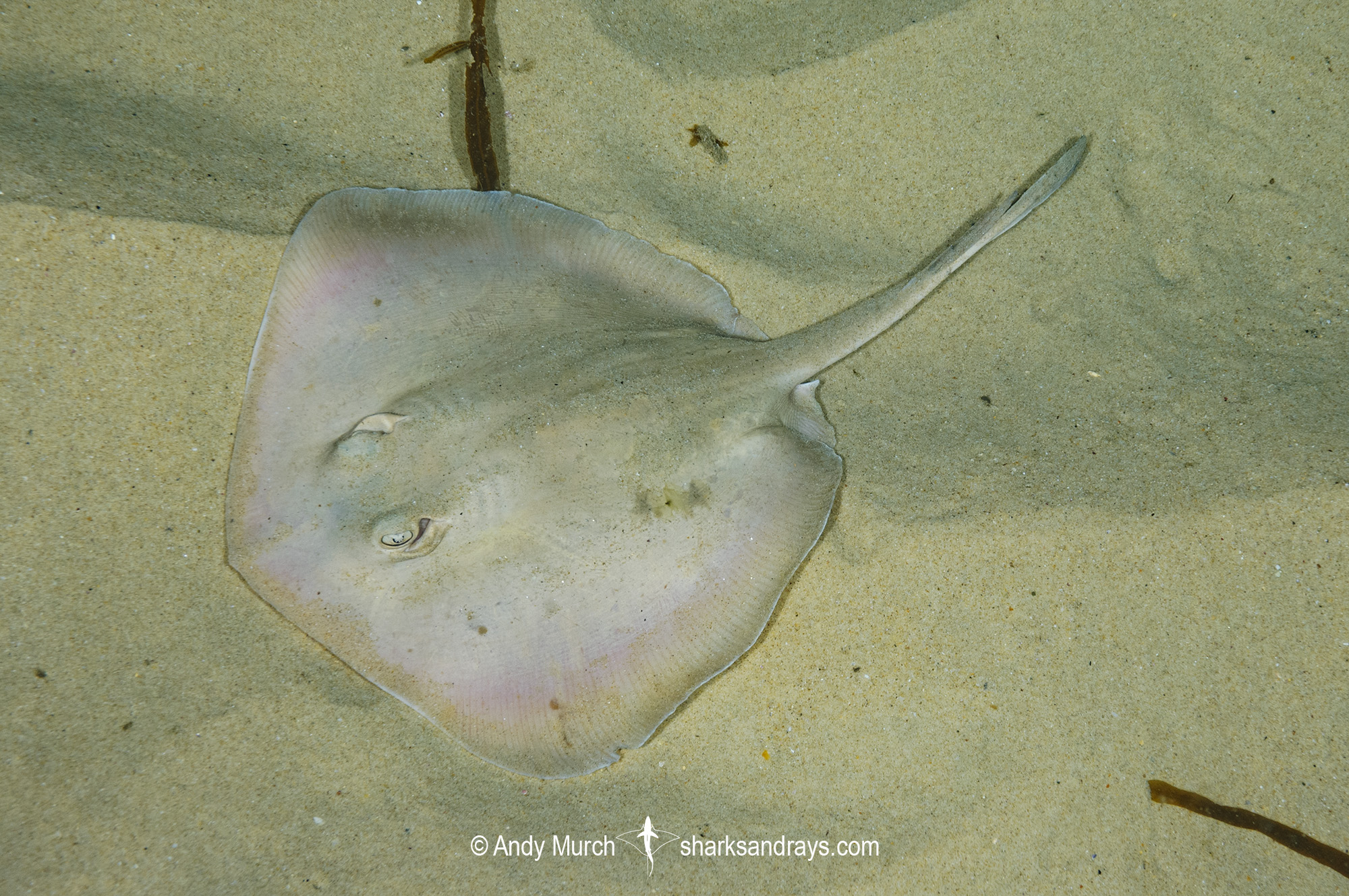Common name(s)
Common Stingaree.
Identification
A medium-sized stingaree with a somewhat rounded kite-shaped disc that is slightly wider than long. Snout obtusely angular, sometimes with a slightly extended tip. Anterior margins of disc straight or mildly convex, apices rounded. Disc completely smooth.
Eyes medium-sized; orbit length 0.21-0.27 x snout length. Spiracle origin below or slightly anterior to mid-eye. Mouth small. 3-5 oral papillae on mouth floor. Nasal curtain skirt shaped, not extended into a distinct lobe, posterior margin heavily fringed. Broad, lateral-posterior lobe present on each nostril.
Tail long (0.83-0.96 x disc length), oval in cross-section, depressed anteriorly. Small dorsal fin present on mid-tail, sometimes reduced to a fleshy ridge. Caudal fin relatively narrow and elongate.
Colour
Dorsum light to dark greyish brown with no markings. Disc often paler near margin. Dorsal fin greyish. Ventrum white, sometimes with a dusky margin.
Size
Total length at least 52cm. Length at birth approximately 12cm.
Habitat
Subtropical to temperate seas. Found on sandy substrates, often adjacent to rocky reefs. Also forages upstream in estuaries. Intertidal to 135m but usually shallower than 60m.
Distribution
Southwestern Pacific. Confined to southeast Australia from southern Queensland to Cape Howe, New South Wales.

Conservation Status
NEAR THREATENED
Although not directly targeted, the Common Stingaree is under significant pressure from ground fish fisheries, especially inshore trawling. Trygonoptera testacea has no commercial value and is generally discarded, but post-release survival is low. Overall, the population is decreasing.

Reproduction
Viviparous, probably with trophodermic nutrition. 2 pups per litter. Parturition occurs in March and April.
Diet
Diet consists mainly of polychaete worms and shrimps.
Behavior
Poorly known.
Reaction to divers
Fairly easy to observe with non-threatening movements but will bolt if approached too closely.
Diving logistics
As the name suggests, the common stingaree is easily spotted throughout much of its range in conveniently shallow water. For example, while shore diving at Southwest Rocks, I stumbled upon a dozen in the a single dive.
Shore dives in Nelson Bay are also a good place to see this species.








